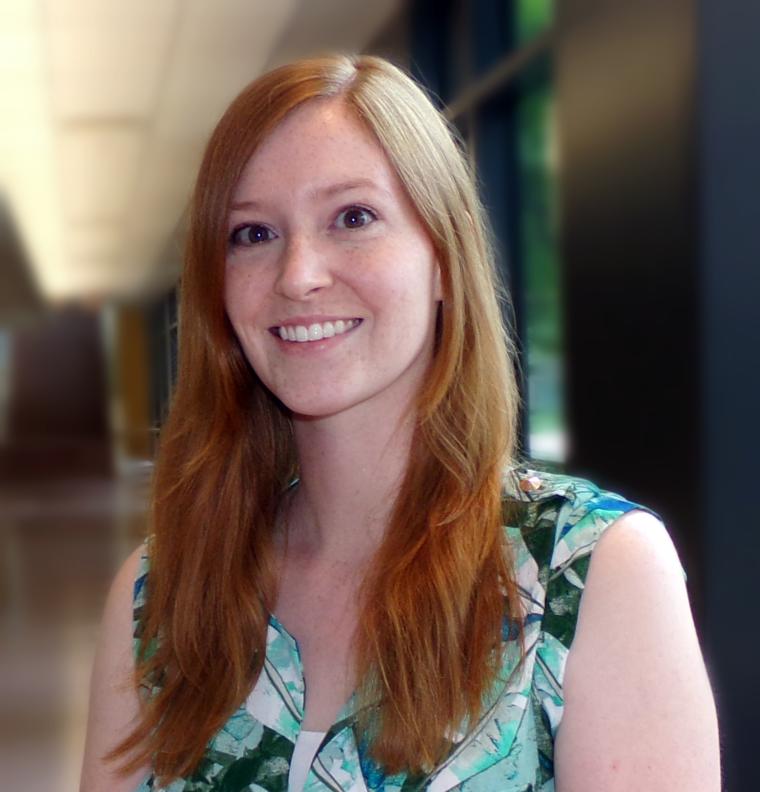The Research You Cannot Resist
November 7, 2014
Rosalind Black

Photo credit: The Department of Chemistry and Biochemistry
“Some students think that they aren’t scientists until they leave these walls, but that’s not true. They are young scientists now,” says Lisa Ryno, assistant professor of chemistry. Ryno, who began her Oberlin career this summer, plans to open her lab to students for the first time this winter term to equip them with the tools they will need to further her research in addition to conducting experiments of their own design.
Ryno’s lab, which she is putting together while teaching her first semester of classes, focuses on exploring new ways to undermine bacterial resistance to antibiotics. “The antibiotics that are in use today typically operate by a handful of mechanisms,” Ryno says. “They will inhibit cell division or mess with the bacteria cell wall, etc. So if we learn to think about new ways that antibiotics might impact bacterial viability, that would be a way of temporarily circumventing this idea of resistance.”
The lab includes two projects that ask the same question in different ways: What untried methods could help fight harmful bacteria? The first project targets the “chaperone” protein SurA in E. coli, which maintains the cell membrane and folds other proteins in their proper three-dimensional shapes so they can leave the cell. The health of E. coli depends on the functioning of SurA, so if Ryno’s lab can discover a way to inhibit the protein, it could prevent the cell from secreting detrimental proteins and lead to the development of new types of antibiotics.
The second undertaking of the lab analyzes changes in biofilm, a sedentary layer of bacteria embedded in a gooey substance that aids in protecting the bacteria from antibiotics. Different destructive stimuli activate pathways in bacteria, called stress-responsive pathways, that work to heal damage caused by the stress stimulus. At this stage, the lab will study the composition of the biofilm as it responds to different stimuli to observe how resistant it might be to antibiotics. Ryno anticipates that the lab will encounter the activation of cell death pathways, a response to over-activation of stress-responsive pathways that leads to the cell’s self destruction. Careful study of the components of the most promising pathways could lead to a new target for antibiotic development.
The study of biofilms and their relationship to stress pathways is growing more popular with researchers at this time. Ryno, herself, has studied stress-responsive pathways in mammals in depth since she attended graduate school at the Scripps Research Institute. Ryno continues working with her grad school lab today, co-first authoring an article published this September in Proceedings of the National Academy of Science (PNAS) that outlines a potential new treatment for light chain amyloidosis, a disease where plaques build up throughout the body, interfering with blood flow and organ functionality.
Ryno wants her lab to offer driven, interested, and curious students the skills they will need to conduct their own experiments and be at ease in the lab. She has no strict prerequisite for joining her lab. “It doesn’t really matter what you know or what you’ve done in the past, but rather being ready to learn and open to learning new techniques,” she says. Her students will learn microbiology and molecular biology techniques in addition to classical biochemistry techniques such as protein purification and learning how to grow and analyze biofilms.
As a new professor at Oberlin, Ryno is delighted by the “unrestricted intellectual curiosity” of the students in her classes. “There is a great interdisciplinarity here,” Ryno says. “People aren't afraid to draw on what they've learned in other classes and use those tools to think about other problems.”
Ryno expects no less from the students in her lab and excitedly awaits the results. Although the discovery that will contribute to manufacturing new forms of antibiotics may be a few years in the making, she looks forward to exploring the subject and cultivating her students’ abilities. “One of the most important things that a young scientist can do is experiment and try things,” Ryno says. “I think initially it’s easy to have a bit of reservation about being independent in the lab, but once you start to gain that confidence, you can do some really amazing things as an undergrad.”
You may also like…
Oberlin Researchers Part of Breakthrough Study on Gravitational Waves
Fifteen-year NSF-funded project involves dozens of students past and present, provides evidence of Einstein’s theory of relativity.
Fins to the Left (and Right)
Biology major Jules Lieberman to study shark and ray migratory patterns through NOAA Hollings Scholarship.
Keith Tarvin Earns Excellence in Teaching Award
A scholar in the fields of evolution, behavioral ecology, ornithology, and organismal biology, Tarvin was honored for his approach to teaching and mentoring undergraduate researchers.


